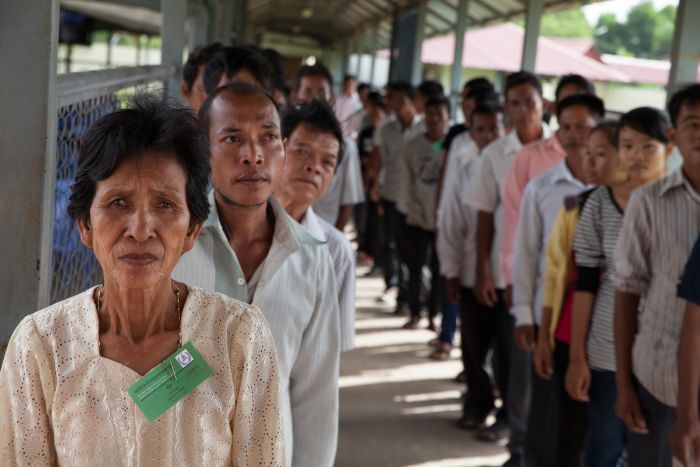How Did Turatsinze Make Contact with UN Peacekeepers?
Dallaire’s January 11 cable refers to a “very very important government politician” as the facilitator of meetings with a “top level trainer” in the Interahamwe militia. In his memoir, Dallaire identifies this unnamed politician as Faustin Twagiramungu, who had been named as Rwanda’s prime minister–designate in the transitional government due to be set up under the Arusha Accords. At the time, Twagiramungu headed the Mouvement démocratique républicain (MDR), a Hutu-based party that had emerged as the principal internal opposition to Habyarimana’s MRND party.
Further evidence of the role played by Rwanda’s political opposition in introducing the informant known as “Jean-Pierre” to the UN is provided by a January 11 cable from Dallaire’s civilian superior, Jacques-Roger Booh-Booh. The cable refers to another MDR member, related to Turatsinze by marriage, as the key intermediary with the informant. This mysterious go-between has since been identified as a man named Charles Ntazinda, a senior foreign ministry official and one of the founding members of the MDR.
Acting on the information received from Twagiramungu, Dallaire assigned his subordinates to make contact with “Jean-Pierre” on the afternoon of January 10. As relayed to New York by Dallaire later that night, Turatsinze claimed that the Interahamwe was providing military training to its supporters, with the assistance of the Rwandan army. According to Turatsinze, the Interahamwe was no longer focused primarily on defending the capital from attack but on a much more sinister mission.
Turatsinze offered to take the peacekeepers to the site of a “major weapons cache with at least 135 weapons,” including AK-47 rifles supplied to the Interahamwe by the army. In return for cooperating with UNAMIR, the UN peacekeeping force in Rwanda, Turatsinze requested protection for himself and his family. Sensing an opportunity to crack down on political extremists, Dallaire told his superiors that he was planning to “take action within the next 36 hours.” In addition to seizing the weapons caches, he also requested permission to spirit the informant out of Rwanda for his protection.
Dallaire injected a note of caution into his cable, saying that “the possibility of a trap” directed against “the very very important political person” (i.e., Twagiramungu) could not be “fully excluded.” What the UNAMIR commander did not know at the time was that Turatsinze may also have been in contact with the Tutsi-led RPF rebel group which had moved into the parliament building in Kigali. Evidence of Turatsinze’s contacts with the RPF only emerged a decade later at the Rwanda war crimes tribunal.
Nevertheless, Dallaire ended the cable with his old French-Canadian army motto, aimed at persuading his bosses in New York to approve his plan to seize the Interahamwe weapons caches: “Where there’s a will, there’s a way. Let’s go.”


